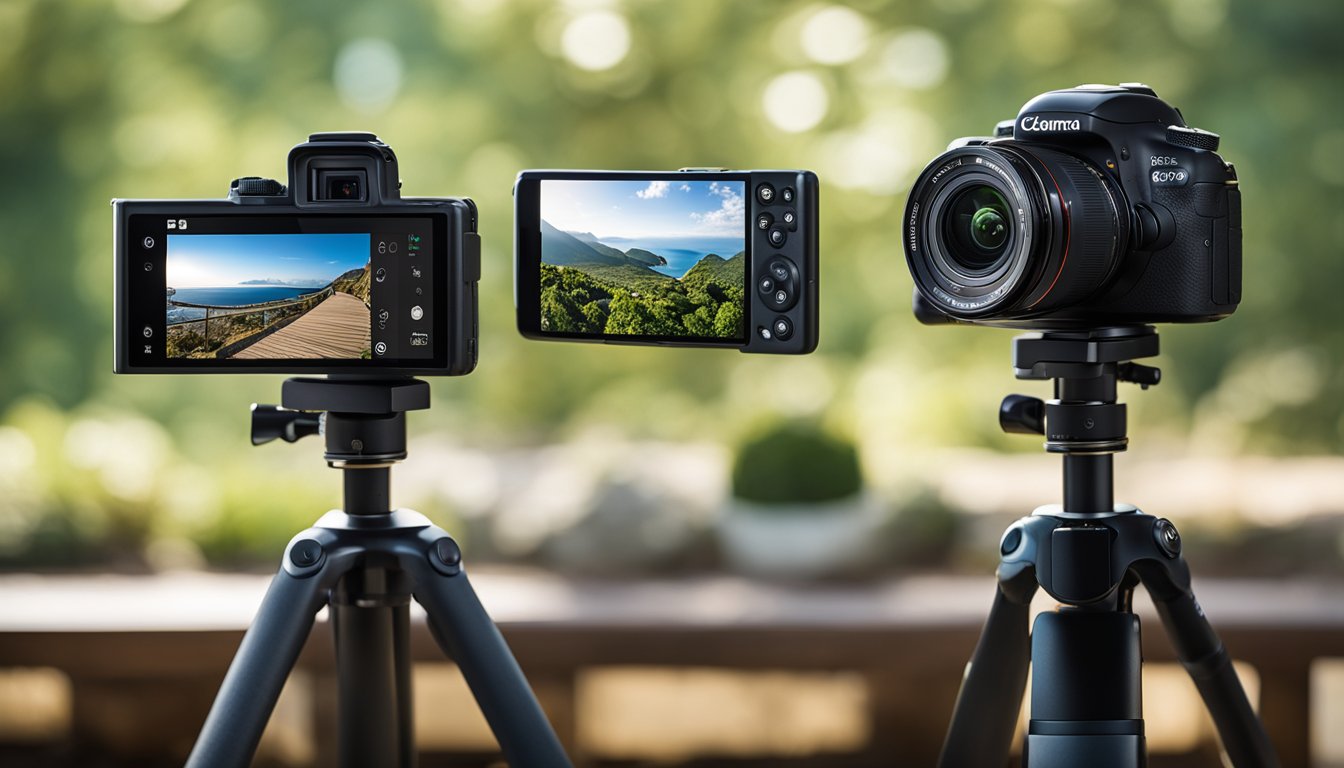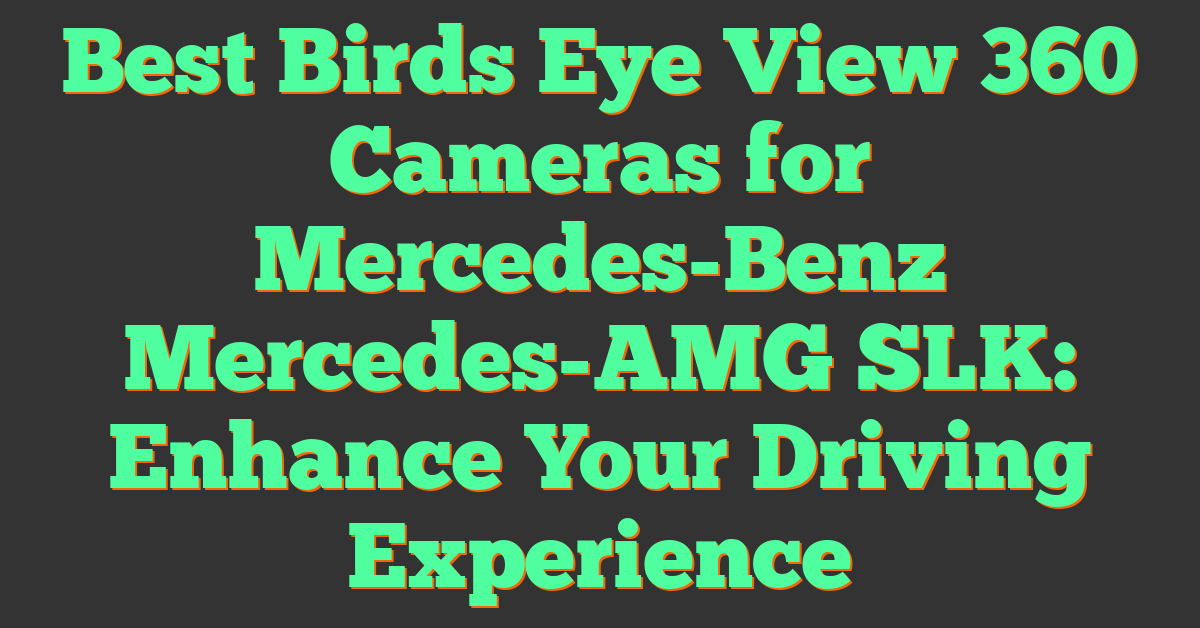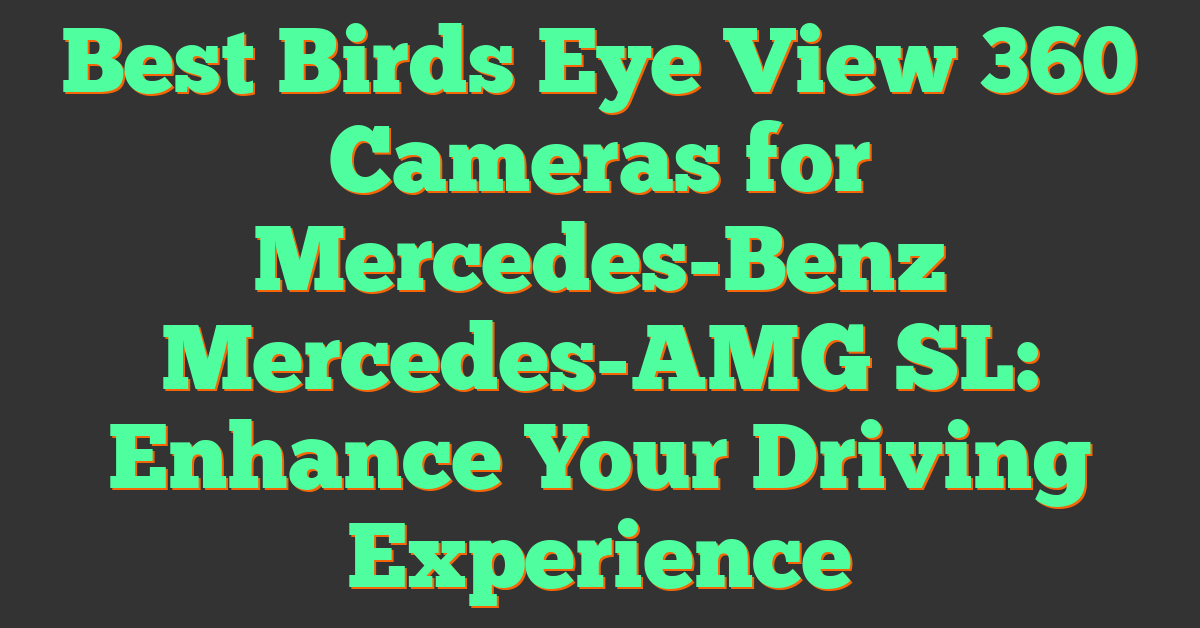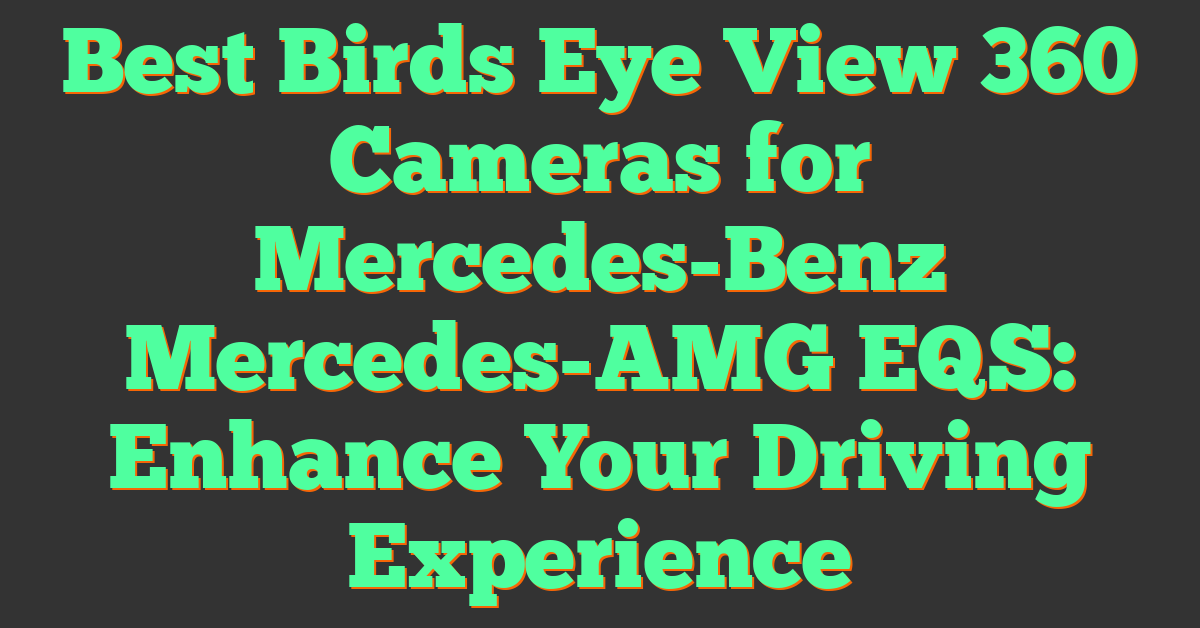If you’re someone who enjoys photography or videography, you might have heard about 360-degree cameras. These cameras capture a panoramic view of the surroundings, allowing you to capture everything around you in a single shot. But is a 360-degree camera useful for everyday use? In this article, we’ll explore the benefits of 360-degree cameras and help you decide if they’re right for you.

360-degree cameras are a relatively new technology that has been gaining popularity in recent years. These cameras use multiple lenses to capture a full 360-degree view of the surroundings. This technology is particularly useful for capturing immersive video and photos that make the viewer feel like they are actually there. But beyond just creating cool content, 360-degree cameras have a number of practical applications as well.
Whether you’re a professional photographer, a content creator, or just someone who enjoys taking photos and videos, a 360-degree camera might be a useful tool for you. In the next section, we’ll take a closer look at some of the benefits of 360-degree cameras and explore some popular models on the market.
Key Takeaways
- 360-degree cameras capture a panoramic view of the surroundings, allowing you to capture everything around you in a single shot.
- These cameras are useful for creating immersive video and photos, but they also have practical applications.
- Whether you’re a professional photographer, a content creator, or just someone who enjoys taking photos and videos, a 360-degree camera might be a useful tool for you.
Understanding 360-Degree Cameras
https://www.youtube.com/watch?v=xqWkJJOcU4g&embed=true
If you’re interested in capturing immersive photos and videos, then a 360-degree camera might be just what you need. These cameras capture everything around them, giving you a complete view of your surroundings. In this section, we’ll take a closer look at 360-degree cameras, how they work, and their key features.
Evolution of 360 Cameras
360-degree cameras have come a long way since they were first introduced. Early models were bulky and expensive, with limited image quality. However, thanks to advances in technology, today’s 360-degree cameras are much smaller, more affordable, and capable of capturing high-quality images and video.
How 360 Cameras Work
360-degree cameras use multiple lenses to capture a full 360-degree view of your surroundings. These lenses capture images or video from different angles, which are then stitched together to create a seamless 360-degree image or video. This process is done automatically by the camera’s software, making it easy for anyone to create immersive content.
Key Features of 360 Cameras
When choosing a 360-degree camera, there are several key features to consider. These include:
- Resolution: The higher the resolution, the sharper and more detailed your images and videos will be.
- Frame Rate: A higher frame rate means smoother video playback.
- Image Stabilization: This feature helps to reduce camera shake, resulting in smoother and more professional-looking videos.
- Live Streaming: Some 360-degree cameras allow you to live stream your content directly to social media platforms like Facebook and YouTube.
- Waterproofing: If you plan to use your 360-degree camera for outdoor activities, look for a model that is waterproof or at least water-resistant.
In conclusion, 360-degree cameras are a great way to capture immersive photos and videos. By using multiple lenses to capture a full 360-degree view of your surroundings, these cameras offer a unique perspective that traditional cameras can’t match. With so many models to choose from, it’s important to consider your needs and budget when selecting a 360-degree camera that’s right for you.
The Benefits of 360-Degree Cameras
https://www.youtube.com/watch?v=X38sjawXo0I&embed=true
If you’re looking for a way to capture immersive experiences, 360-degree cameras are a great choice. With their ability to capture footage in all directions, they provide a unique perspective that can transport viewers to a different world. In this section, we’ll explore some of the benefits of 360-degree cameras.
Immersive Experience
One of the biggest benefits of 360-degree cameras is their ability to create immersive experiences. Whether you’re shooting footage of a concert, a scenic landscape, or an action-packed adventure, 360-degree cameras allow viewers to feel like they’re right there with you. This is especially true when viewed through virtual reality (VR) headsets, which can make viewers feel like they’re actually inside the scene.
Versatility in Photography
« Is 360 Camera Worth It? Pros and Cons to Consider
Does Mi 360 Camera Rotate Automatically? A Quick Guide »
360-degree cameras are also incredibly versatile when it comes to photography. Unlike traditional cameras, which are limited to capturing what’s in front of them, 360-degree cameras can capture everything around them. This makes them great for capturing panoramic landscapes, group photos, and even action shots. Plus, with the ability to capture both photos and videos, 360-degree cameras offer a lot of creative freedom.
Convenience for Users
Another benefit of 360-degree cameras is their convenience for users. They’re typically small and lightweight, making them easy to carry around. Plus, they’re often designed to be easy to use, with simple controls and intuitive interfaces. This makes them a great choice for people who want to capture memories without having to worry about complicated camera settings.
In summary, 360-degree cameras offer a range of benefits, from creating immersive experiences to providing versatility in photography. They’re also incredibly convenient for users, making them a great choice for anyone who wants to capture memories in a unique and compelling way.
Popular 360-Degree Camera Models
https://www.youtube.com/watch?v=5zWpa0btOvk&embed=true
If you’re interested in getting a 360-degree camera, there are several models available in the market. Here are some popular ones:
GoPro Max and Its Features
GoPro Max is a popular 360-degree camera that comes with several features. It can capture 5.6K video and 16.6MP photos in 360-degree mode. It also has a feature called Max HyperSmooth, which provides smooth and stable footage. The camera is waterproof up to 5 meters and has a built-in touch screen for easy control. GoPro Max is compatible with the GoPro app, which allows you to edit and share your footage.
Ricoh Theta Series
Ricoh Theta is a series of 360-degree cameras that come with different features. Ricoh Theta Z1 is one of the latest models in the series, which can capture 23MP photos and 4K videos. It also has a built-in OLED display and can shoot in RAW format. Ricoh Theta V is another popular model that can capture 4K videos and has a built-in 4-channel microphone for spatial audio recording.
Insta360 Product Line
Insta360 has a product line of 360-degree cameras that come with different features. Insta360 One X is a popular model that can capture 5.7K video and 18MP photos. It also has a feature called FlowState, which provides smooth and stable footage. Insta360 One R is another model that comes with a modular design, allowing you to swap lenses and change the camera’s functionality. Insta360 X3 is a versatile and well-rounded camera that can capture high-quality 5.7K 360-degree video or immersive 72-megapixel 360 photos.
Overall, these cameras offer different features and functionalities to suit your needs. You can choose the one that fits your budget and requirements.
360 Cameras in Virtual Reality
https://www.youtube.com/watch?v=iK_nfBKsaDk&embed=true
If you’re interested in creating VR content, then a 360-degree camera can be an essential tool. With its ability to capture a full view of the environment, you can create immersive experiences that transport your viewers to a different place. In this section, we’ll explore how 360 cameras are useful in virtual reality and how they can enhance your VR content creation.
VR Content Creation
One of the main benefits of 360-degree cameras is their ability to create VR content. With a 360 camera, you can capture an entire environment and create content that is immersive and interactive. Whether you’re creating a virtual tour of a real estate property or a 360-degree video of a concert, a 360 camera can help you create content that is engaging and memorable.
When creating VR content, it’s important to keep in mind the limitations of the technology. VR headsets have a limited field of view, so you’ll need to ensure that your content is optimized for the headset you’re using. Additionally, you’ll need to consider the resolution of your content. VR headsets have a high resolution, so you’ll need to ensure that your content is of a high enough quality to be viewed in VR.
Compatibility with VR Headsets
Another benefit of 360-degree cameras is their compatibility with VR headsets. Most 360 cameras are designed to be used with VR headsets, and many come with software that allows you to easily convert your content into a VR format. This means that you can create content that is optimized for VR without having to do any additional work.
When choosing a 360 camera for VR content creation, it’s important to ensure that the camera is compatible with the VR headset you’re using. Some cameras may not be compatible with certain headsets, so it’s important to do your research before making a purchase.
In conclusion, 360-degree cameras are a useful tool for creating VR content. With their ability to capture an entire environment, they can help you create immersive experiences that transport your viewers to a different place. Additionally, their compatibility with VR headsets makes it easy to create content that is optimized for VR. Whether you’re creating virtual tours, 360-degree videos, or other VR content, a 360 camera can help you create content that is engaging and memorable.
Using 360 Cameras for Video and Vlogs
https://www.youtube.com/watch?v=N5snusKpgB8&embed=true
If you’re a vlogger or a content creator looking to add a new dimension to your videos, a 360 camera could be just what you need. With a 360 camera, you can capture everything around you, giving your viewers a fully immersive experience. Here are some tips on how to use a 360 camera for your videos and vlogs.
Editing 360-Degree Footage
Editing 360-degree footage can be a bit tricky, but it’s not impossible. One of the most popular editing software for 360-degree footage is GoPro’s OverCapture. OverCapture allows you to shoot in 360 degrees and then choose which parts of the footage you want to use in your video. You can also adjust the perspective and add zoom effects to make your video more dynamic.
Another popular editing software for 360-degree footage is Adobe Premiere Pro. Premiere Pro allows you to work with 360-degree footage just like any other video footage. You can add effects, transitions, and text to your footage, and export it in a variety of formats.
Vlogging with 360 Cameras
Vlogging with a 360 camera can be a lot of fun. You can take your viewers on a virtual tour of your surroundings, giving them a sense of what it’s like to be there with you. You can also use a 360 camera to capture your reactions to things, giving your viewers a more personal connection to you.
When vlogging with a 360 camera, it’s important to keep in mind that not all platforms support 360-degree videos. YouTube is one platform that does support 360-degree videos, so if you’re planning on vlogging with a 360 camera, YouTube is a good place to start. You can also share your videos on Facebook and Vimeo, both of which support 360-degree videos.
Overall, using a 360 camera for your videos and vlogs can add a new dimension to your content. With the right editing software and some creativity, you can create videos that are truly immersive and engaging.
360 Cameras vs. Traditional Cameras

When it comes to capturing memories, there are two types of cameras to choose from: traditional cameras and 360-degree cameras. While traditional cameras have been the norm for years, 360-degree cameras are becoming more popular due to their unique capabilities. In this section, we’ll compare the two types of cameras and highlight their differences.
Comparing Lenses and Image Quality
One of the most significant differences between traditional cameras and 360-degree cameras is their lenses. Traditional cameras typically have a single lens that takes a photo or video in one direction. In contrast, 360-degree cameras have multiple lenses that capture a complete 360-degree view of the surroundings.
The difference in lenses affects the image quality of the cameras. Traditional cameras are known for producing high-quality images and videos due to their high-resolution lenses. On the other hand, 360-degree cameras produce lower quality images and videos due to their wider field of view and lower resolution lenses. However, 360-degree cameras have the advantage of capturing an entire scene, while traditional cameras can only capture what is in front of them.
Differences in Frame Capture
Another significant difference between traditional cameras and 360-degree cameras is how they capture frames. Traditional cameras capture a single frame at a time, while 360-degree cameras capture multiple frames simultaneously. This means that traditional cameras are better at capturing fast-moving objects, while 360-degree cameras are better at capturing a complete view of a scene.
Moreover, traditional cameras require more time and effort to capture a complete view of a scene. You need to take multiple photos or videos and stitch them together to create a panoramic view. In contrast, 360-degree cameras capture a complete view of a scene in one shot, making it easier and faster to capture a complete view of a scene.
In conclusion, both traditional cameras and 360-degree cameras have their strengths and weaknesses. Traditional cameras are better at producing high-quality images and videos, while 360-degree cameras are better at capturing a complete view of a scene. Ultimately, the choice between the two types of cameras depends on your needs and preferences.
Innovations in 360-Degree Photography
https://www.youtube.com/watch?v=DXyw_Kp0gAw&embed=true
With the increasing popularity of 360-degree photography, camera manufacturers are constantly innovating to improve the quality and user experience of this technology. Here are some of the recent advancements in 360-degree photography:
Advancements in Image Stabilization
One of the biggest challenges of capturing 360-degree photos and videos is keeping the camera steady while moving. Camera manufacturers have addressed this issue by improving image stabilization technology. Some cameras now feature built-in gyroscopes and accelerometers that detect motion and compensate for camera shake. This results in smoother and more stable footage, making it easier to capture high-quality 360-degree content.
The Rise of Modular Camera Designs
Modular camera designs have become increasingly popular in recent years, and this trend has extended to 360-degree cameras as well. Modular cameras consist of multiple components that can be easily swapped out or combined to create a custom camera setup. This allows photographers to choose the lenses, sensors, and other components that best suit their needs. Additionally, modular designs make it easier to repair or upgrade individual components without having to replace the entire camera.
Overall, these innovations in image stabilization and modular design have made 360-degree photography more accessible and user-friendly. As these technologies continue to evolve, we can expect even more exciting developments in the world of 360-degree photography.
360-Degree Cameras in Vehicles
https://www.youtube.com/watch?v=fdDZaH8hg1A&embed=true
If you are in the market for a new car, you may have noticed that many newer models come equipped with a 360-degree camera system. This technology provides drivers with a real-time view of the area surrounding their car, making it easier to navigate tight spaces and avoid collisions. In this section, we’ll take a closer look at how 360-degree cameras work and explore some of the benefits of this technology.
Car Infotainment Systems
Many 360-degree camera systems are integrated into a car’s infotainment screen. This means that you can see a top-down view of your car and its surroundings right on the dashboard. Some car manufacturers, such as Kia and Audi, offer larger screens with higher resolutions, making it easier to see details and navigate in tight spaces.
Parking Assistance with Top-Down View
One of the most significant benefits of 360-degree cameras is their ability to assist with parking. With a top-down view of your car and its surroundings, you can see exactly how much space you have on all sides. This can be especially helpful when parallel parking or maneuvering into a tight spot.
Hyundai and Nissan are two manufacturers that offer parking assistance with a top-down view. This feature can help you park more quickly and accurately, reducing the risk of collisions and making it easier to get in and out of tight spaces.
Overall, 360-degree cameras are a valuable tool for drivers who want to navigate more safely and efficiently. Whether you are parking in a tight spot or maneuvering through a crowded parking lot, these cameras can help you see more clearly and avoid collisions.
360 Cameras for Social Media Platforms
https://www.youtube.com/watch?v=FcyIduNVuPM&embed=true
If you’re looking to create engaging content for your social media platforms, a 360 camera can be an excellent tool. With this type of camera, you can capture 360-degree photos and videos that allow your followers to explore your world in a more immersive way.
Sharing on Facebook and YouTube
Facebook and YouTube both support 360-degree content, making it easy to share your creations with your followers. When you upload a 360-degree photo or video to Facebook, it will automatically be recognized as such, and viewers will be able to explore the image by dragging their finger or cursor across the screen. Similarly, when you upload a 360-degree video to YouTube, viewers will be able to change their perspective by dragging their finger or cursor across the screen.
Engaging Viewers with Interactive Content
360-degree content is an excellent way to engage your viewers with interactive content. For example, you can use a 360-degree camera to create virtual tours of your business or showcase your products in a more immersive way. You can also use a 360-degree camera to create interactive games or quizzes that allow your followers to explore different environments and discover new things.
Overall, a 360-degree camera is a useful tool for creating engaging content for your social media platforms. With the ability to capture immersive photos and videos, you can give your followers a more interactive experience and keep them engaged with your brand.
Accessories and Add-Ons for 360 Cameras
https://www.youtube.com/watch?v=Bee3ycTjI1Q&embed=true
If you’re interested in getting the most out of your 360 camera, consider investing in some accessories and add-ons. Here are a few to consider:
Choosing the Right Selfie Stick
A selfie stick is a must-have accessory for 360 cameras, as it allows you to capture 360-degree footage from a variety of angles. When choosing a selfie stick, it’s important to consider the length and durability of the stick. Look for a stick that extends at least 30 inches, as this will give you plenty of flexibility when it comes to shooting angles. Additionally, look for a stick that is made from durable materials and has a sturdy grip, as this will help prevent your camera from falling and getting damaged.
One popular option is the invisible selfie stick, which is designed to be hidden from view in your footage. This can give your footage a more natural and immersive feel, as it eliminates the distraction of a visible stick.
Exploring Additional Lenses and Sensors
Another way to enhance your 360 footage is by adding additional lenses or sensors to your camera. For example, fisheye lenses can help capture wider angles, while telephoto lenses can help you zoom in on specific details. Additionally, sensors like GPS and accelerometers can help you track your camera’s movement and location, which can be useful for creating more immersive footage.
When choosing additional lenses and sensors, it’s important to make sure that they are compatible with your camera. Some cameras may have proprietary connectors or limitations on the types of add-ons that can be used. Be sure to do your research and read reviews before making a purchase.
Overall, accessories and add-ons can be a great way to enhance your 360 footage and take your camera to the next level. Just be sure to choose options that are compatible with your camera and that meet your specific needs.
Price and Affordability of 360 Cameras
https://www.youtube.com/watch?v=FqeZGKZfcK8&embed=true
When it comes to choosing a 360 camera, price is a major factor to consider. You don’t want to spend a fortune on a camera that you may not use frequently. Fortunately, there are several budget-friendly options available for beginners.
Budget-Friendly Options for Beginners
For those who are new to 360 cameras, there are many affordable options available. Cameras like the Insta360 Nano S and the Ricoh Theta SC2 can be purchased for under $300. These cameras offer a good balance between price and performance, making them perfect for beginners.
If you’re looking for a more affordable option, the GoPro MAX is a great choice. It’s priced at around $500 and offers high-quality 360 videos and photos. It’s also waterproof and has a durable design, making it perfect for outdoor adventures.
Investing in Advanced Camera Technology
If you’re a professional photographer or videographer, investing in an advanced 360 camera may be worth it. The Kandao QooCam 8K is currently one of the best 360 cameras on the market, offering high-quality 8K videos and photos. It’s priced at around $600, making it a good investment for professionals.
Another advanced 360 camera is the Insta360 Pro 2. It offers 8K 3D videos and photos, making it perfect for VR content creation. It’s priced at around $5,000, making it a pricey investment. However, if you’re serious about 360 content creation, it’s worth the investment.
In conclusion, the price of 360 cameras varies greatly depending on the features and performance. If you’re a beginner, there are many affordable options available that offer good performance. If you’re a professional, investing in an advanced camera may be worth it.
Frequently Asked Questions
https://www.youtube.com/watch?v=5xds4olIjw0&embed=true
What are the benefits of having a 360-degree camera in a car?
A 360-degree camera in a car provides a complete view of the surroundings of the vehicle. This can help you avoid accidents and collisions, especially when parking or driving in tight spaces. With a 360-degree camera, you can see all angles of your vehicle and detect any obstacles or hazards in your path. Additionally, a 360-degree camera can help you stay alert and focused on the road while driving, as it provides a clear and comprehensive view of your surroundings.
Can I retrofit my car with a 360-degree camera system?
Yes, you can retrofit your car with a 360-degree camera system. There are many aftermarket systems available that can be installed in your vehicle. However, it is important to choose a system that is compatible with your car’s make and model. You may also need to consult with a professional installer to ensure that the system is installed correctly and functions properly.
What should I consider when choosing the best 360-degree camera for my vehicle?
When choosing a 360-degree camera for your vehicle, you should consider factors such as image quality, field of view, durability, and ease of use. Look for a camera that provides high-quality images and a wide field of view to ensure that you can see all angles of your vehicle. Additionally, choose a camera that is durable and can withstand harsh weather conditions and rough roads. Finally, consider the ease of use of the camera, including its installation process and user interface.
Are there any drawbacks to using a 360-degree camera for car racing?
While a 360-degree camera can provide a comprehensive view of your surroundings, it may not be suitable for car racing. The camera may add additional weight to your vehicle, which can affect its performance on the track. Additionally, the camera may not be able to capture fast-moving objects or provide a clear view in low-light conditions.
How does a 360-degree camera enhance the driving experience in an SUV?
A 360-degree camera can enhance the driving experience in an SUV by providing a clear and comprehensive view of the vehicle’s surroundings. This can be especially useful when driving off-road or in rugged terrain, as it allows you to see all angles of your vehicle and detect any obstacles or hazards in your path. Additionally, a 360-degree camera can help you park your SUV more easily and safely, as it provides a clear view of your surroundings.
What is the average cost of installing a 360-degree camera in a vehicle?
The cost of installing a 360-degree camera in a vehicle can vary depending on the make and model of the camera and the type of vehicle you have. Generally, the cost of installation can range from a few hundred to a few thousand dollars. It is important to research and compare different camera systems and installation services to find the best option for your needs and budget.















